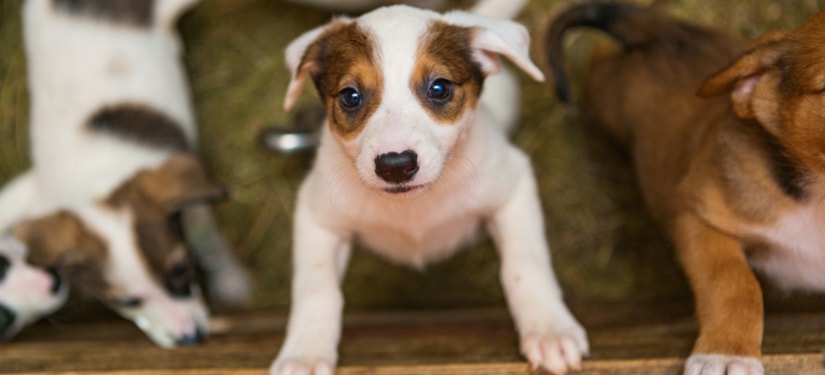The Do’s and Don’ts of Dog Adoption

Contents
Hollywood has presented pet adoption in such a charming, heartfelt way– the dog was lost, hungry, and cold, or was left alone in a cage at a shelter. Suddenly, a human saw it, looked at its eyes, and finally decided to take him or her into his or her own home. He or she was presented into a family, swaddled in a spare blanket, and was allowed to sleep next to the person who took it in. The dog or puppy rarely reacts, barks, howls, or does something aside from a giving his or her rescuer a long, cute goo-goo eyes stare.
While I am all for adoption being presented in good light (I still feel my heartstrings being tugged whenever I remember that scene from “Hachiko: A Dog’s Story”!), what these movies don’t present is dog adoption as it is: complicated, long, and tedious. What the audience doesn’t see is the tons of paperwork, the days of preparation, and the weeks or months of training it took for the dog to actually get used to its environment, let alone the presence of a five-member family!
But don’t let this hard truth deter you from welcoming a rescue dog into your home. Armed with the right knowledge and materials, you can experience the same thing you see in the movies, plus more! Below are some do’s and don’ts you have to take note of before, during, and after you adopt a rescue puppy or dog.
Before adoption:
Do…prepare everyone and everything ahead of time.
This includes your family and other household members, your possessions, and the paperwork. Let’s discuss all three.
Firstly, you have to see if all members of the family are ready to have a pet. You must have a consensus because all of you are going to be responsible for the dog’s welfare. Then, assign who will feed, walk, and clean up after the dog, among other things.
As for your possessions, ensure that precious, fragile items are away from the dog’s reach so that you can avoid as many accidents as possible. This phase is crucial since the newcomer needs the time and space to adjust with as few injuries as possible. Ease the edges of square tables or other furniture to deter any harm. Taking care of your possessions also include acquiring an appropriate one for your dog to consume so that he or she won’t use your carpet to pee on and your bed to sleep on. Buy the essentials he would possibly need ahead of time and place them in the specific space in your home where you want him to stay.
On the other hand, the paperwork you might need to prepare may vary on the shelter house you would visit. Some would require permission for a house visit or a contract of your lease or home insurance. The papers include mainly any proof that you are eligible to take care of your adopted dog.
Don’t…adopt a dog yet if your household is still grieving from a lost or dead one.
Dogs sense emotions more intensely than humans. Once you bring them in a forlorn, sad house, they would absorb the energy and feel anxious and depressed as well. This could stress out the dog, aside from the fact that they need to adjust to this new environment and the unfamiliar faces.
Do…interview the workers about the dog you are eyeing to adopt.
The shelter volunteers work and take care of the dogs all day and night, so they know which one would suit your taste and lifestyle. Some of them would even be kind enough to continue being available even after the adoption process is done, so try to befriend and chat with them about the dogs as much as you can. They would also appreciate being updated about your chosen dog’s life at their new home.
Don’t…judge a book by its cover.
Upon visiting the shelter, avoid deciding based on physical appearances, or how tame they look inside their kennels. Take your time to observe and test your dog candidate’s temperament by bringing him out of the cage to the open space and walking with him. See how he fairs out into the world even for only 10 minutes. If time allows, try to engage him in different situations, like introducing him to your existing pet for instance (most shelters highly encourage adopters to bring their resident pets during the adoption) or playing fetch with him. Both activities can test your chemistry and energy levels.
During adoption:
Do…research about the shelter house and dog breeds.
Some breeds have established moods, temperaments, and characteristics that are given based on their type. Knowing which one would suit your lifestyle and watching out for that specific breed when you visit the shelter would give you less time to decide on the variety of dogs present. It also minimizes the possibility of assessing based on your gut.
Don’t…let yourself be confined to just one breed.
On the other hand, sticking to one type might narrow your choices substantially. Each dog has its own set of personality traits and characteristics in the same way as humans despite belonging to the same breed. In fact, most shelter workers encountered many adopters who walked away from their facility with a dog that was very far from what they were looking for–and never regretted the decision!
Do…bring the whole household along–including your pet!
As previously mentioned, bringing both parties can test each other’s chemistry and temperament. Also, pet adoption is a family affair. Everyone must agree on the specific dog first before advancing to the next level of the adoption process.
Don’t…stare at any dog for too long.
Establishing eye contact as soon as you meet him is considered a challenge for a fight in dog language. Try to avoid eliciting as much eye contact as possible, no matter how gorgeous that dog is. You don’t appreciate being stared at, so why do the same with dogs?
After adoption:
Do…take your first ride to the vet.
Some shelters are fully-equipped with equipment and workforce that can watch over each dog’s overall health and well-being while in their care. Others are not as lucky. Most shelter vets only do physical exams–no blood work or other fancy tests–because of the lack of funds and people to perform the procedure. Add the fact that most shelters house way more number of dogs than they should be.
Taking your newly-adopted dog immediately after getting him from shelter care might help you be warned of the potential diseases he carried along with him that could be passed along to the humans in your household. You can also update his vaccinations, deworm, or have your pet spayed or neutered before presenting him to your family and friends.
Don’t…overwhelm him with strangers.
While we do understand that you want to immediately present the new member of the family to your friends and neighbors, your dog is still trying to adjust to his new environment. Doing so might cause illicit response from your dog, causing him to be defensive and fight back by barking or howling loudly, or worse, biting your loved one. As much as possible, introduce only one person each or every other day and make him see his or her face for the next few days to establish familiarity.
Do…give him time to adjust accordingly.
Your new dog is still getting used to the new sights, smells, and feel of his new home. Be patient and just be there for him during this whole ordeal. If you are not available, assign another member of your family to act as your backup in case you are not around to help your pet. Of course, this member should be there beside you during the whole adoption process so that your dog would be familiar to him or her as well.
Don’t…bring him to your existing pets immediately.
Dogs are territorial beings. And if you happen to own a cat, it’s double the trouble because felines are known to be fiercely independent creatures. Introducing both parties in one go would only bring chaos and confusion to the whole house, not to mention the injuries both parties might incur. Ease the introduction slowly. For a detailed guide, check out this article about how you can introduce your new dog to a resident cat.
There is definitely a long list of other do’s and don’ts you should know before going through a dog adoption. But once the grueling process is over, the rewards of adopting a rescue dog is more satisfying than anything else which makes all the trouble worth it. Most of these dogs experienced abuse and neglect from their previous owners. They know what it’s like to be alone. Adopting them is the best thing you could do to their life. And in return, these dogs can give you twice the love and affection than what they can offer to their previous owners. Adopt a dog from your nearest shelter today!
